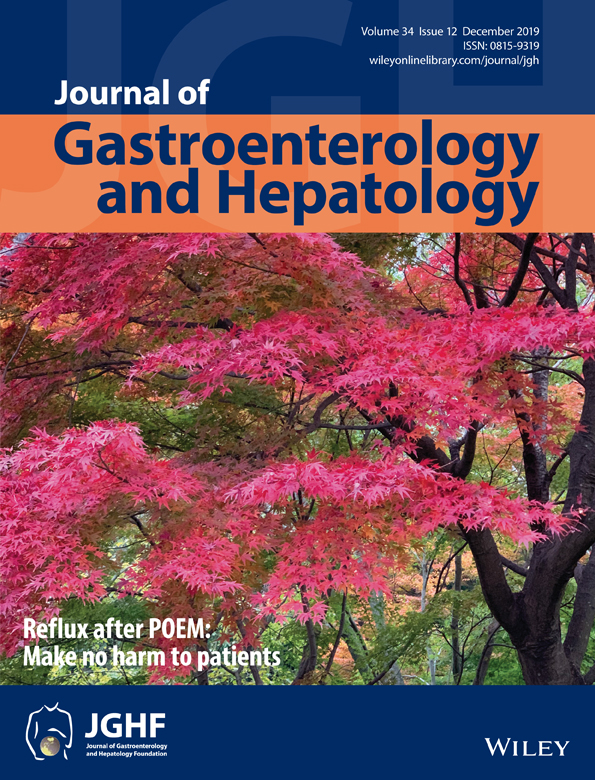Decrease in fat de novo synthesis and chemokine ligand expression in non-alcoholic fatty liver disease caused by inhibition of mixed lineage kinase domain-like pseudokinase
Abstract
Background and Aim
Receptor-interacting serine/threonine kinase 3 and mixed lineage kinase domain-like pseudokinase (MLKL) have gained attention as apoptosis alternate cell death signaling molecules. We aimed to evaluate the role of MLKL in non-alcoholic fatty liver disease (NAFLD).
Methods
Hepatic tissue MLKL expression was compared between NAFLD patients and healthy controls. High-fat diet was fed to wild-type and MLKL-knockout (KO) mice for 12 weeks. Brown adipose fat tissue was measured by [18F]-fluorodeoxyglucose positron emission tomography. Energy expenditure was measured by indirect calorimetry. Anti-MLKL effects were also evaluated in in vitro setting using U937 and HepG2 cells.
Results
Hepatic tissue MLKL expression increased in NAFLD patients compared with healthy controls. MLKL expression increased according to the degree of steatosis, ballooning, and inflammation. High-fat diet-fed MLKL-KO mice displayed decreased alanine aminotransferase, triglycerides, liver weight, NAFLD activity score (6.3 vs 3.5, P < 0.001), steatosis score (3.0 vs 1.8, P < 0.001), inflammation, and ballooning degeneration compared with wild-type mice. SREBP1c, fatty acid synthase, and SCD-1 expressions decreased in MLKL-KO mice. Adipose tissue F4/80-positive crown-like structures were also reduced in MLKL-KO mice. HepG2 cells treated with necrosulfonamide (an MLKL inhibitor) showed reduced Nile red staining and reduced SREBP1c and SCD-1 expressions. Stimulation of necroptosis using lipopolysaccharide + caspase inhibitor (zVAD) increased CXCL1/2 expressions in U937 monocyte cells. Lipopolysaccharide + zVAD-induced increased expressions of CXCL1/2 were reduced with necrosulfonamide treatment.
Conclusions
Mixed lineage kinase domain-like pseudokinase inhibition has protective effects in non-alcoholic steatohepatitis by decreasing hepatic de novo fat synthesis and chemokine (C-X-C motif) ligand expressions.




